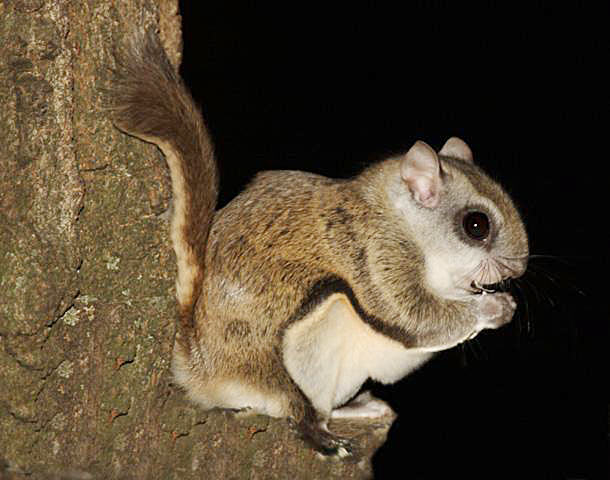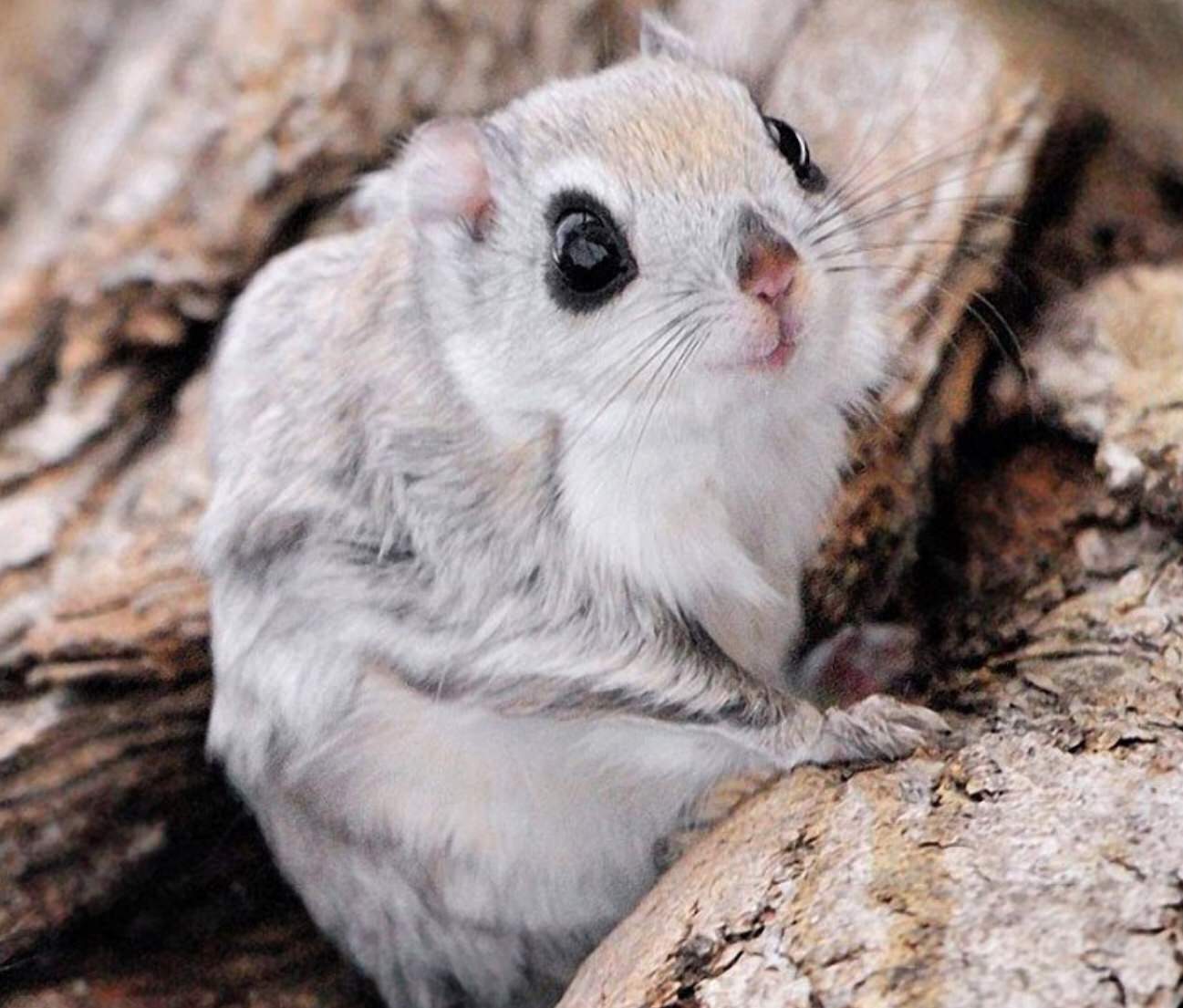
He gave us one last warning to keep our camera flashes off and to keep as quiet as possible, so as to not spook them too soon, and then we made the short three-minute walk into the woods. Realistically, we’ll only have about 10 minutes or so of seeing them clearly before they disappear for the day into their nests.” “Sometimes, if they hear a crow before it’s light, they might even fly down to their nest early.

“The window of opportunity to see them is super short,” he explained. As soon as the sky starts to lighten up, they start to make their retreat back to the safety of their tree-hole nests, to avoid daytime predators. He explained that the momonga spend most of the night snacking on buds on twigs, high up in the tree canopy. In the van, he gave us one last briefing on what to expect. “And this particular spot has more momonga this year than usual, so it’s a really nice place to see them,” he continued. “A lot of wandering over the years!” he replied.

I asked him how he knew that there were momonga in this particular location. “The momonga can fly up to 100m, so even if there’s a road cutting through the line of trees, they can move along the wind breaks.”Īt 5:15am, we arrived at the morning’s location. “Some of these are tens of kilometers long,” Takuji told us as we drove along the pitch black road deep in the rural Tokachi pains, north of Obihiro City in southern central Hokkaido. Our destination for today’s private tour was an old 30m wide wooded wind-break not far from Takuji’s lodge. “Where ever there’s a large stand of old-growth trees, there’ll be momonga,” explained Takuji. While many people might imagine having to trek deep into the woods to see momonga, the reality couldn’t be further from the truth. “Even after all these years, I still think they’re super cute,” he beamed. While his main business is fly-fishing guiding (inspired by multiple extended stays in New Zealand), almost a third of his tours are to see these fascinating nocturnal creatures. Thankfully though, Takuji has been doing this for over 10 years now. Perhaps this momonga-spotting thing isn’t quite as straight forward as we’d expected, we thought. “You’ll have to dress warm, because we’ll be standing around in the snow at about -15℃ for just over one hour.” “We’ll leave the lodge at 5am,” he began. That dreamy, somewhat ignorant hope was shattered when our guide Takuji gave us a briefing the evening before our scheduled momonga tour, which we’d paid for as a special occasion treat to ourselves. With the amount of time we spend in the backcountry here, we thought it only a matter of time before we would happen upon a pair of deep, black, drop-dead cutie-pie eyes peering longingly in our direction as we climbed quietly up a mountain.

It had always been a fanciful desire of ours to see momonga in the wild here in Hokkaido.


 0 kommentar(er)
0 kommentar(er)
